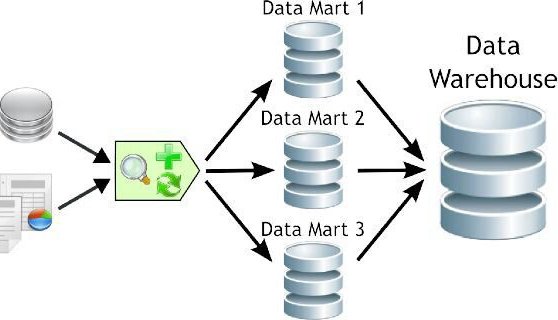What is Data mart ?
Data mart is a subset of an enterprise Data Warehouse and it is a subject oriented database which supports the business needs of department specific to users (middle level management). It represents a single subject.

Difference between Data mart and Data Warehouse.
| Data mart | Data Warehouse |
| It represents single subject | Data Warehouse is the integration of multiple subjects. |
| Given access for middle management. | It has given access for top level management. |
| It stores departments. | It stores enterprise. |
| It stores department specific historical data. | It stores enterprise specific historical data. |
What is To-Down DWH approach?
According to W.H Inmon, first we need to design an enterprise specific database known as Data Warehouse from the Enterprise Data Warehouse (EDWH) department specific data base called “Data mart“.
What is Bottom-Up approach?
According to Kimball, first design department specific databases known as Data marts, Integrated data marts into an Enterprise data warehouse.
Data mart types.
- Dependent Data mart : In a top-down approach, a Data mart development depends on enterprise DWH. Such data marts are known as dependent data marts
- Independent Data mart : In a Bottom-Up approach a data mart development is independent of Enterprise Data Warehouse (EDWH), such data marts are known as independent Data marts. Independent data marts are marts that are fed directly by external sources and do not use the Data Warehouse.
- Embedded Data marts : Embedded Data marts are the marts that are stored within the central DW.
Data Mart features.
- Low cost.
- Contain less information than the warehouse.
- Easily understood and navigated than an enterprise data warehouse.
- Within the range of divisional or departmental budgets.
Data Mart advantages.
- Typically single subject area and fewer dimensions.
- Focused user needs.
- Limited scope.
- Optimum model for Data Warehouse construction.
- Very quick time to market.
Data Mart disadvantages.
- Does not provide integrated view of business information.
- More number of data marts are complex to maintain.
- Scalability issues for large number of users and increased data volume.
